Papers by Stuart Jennings
John Wiley & Sons, Inc. eBooks, Apr 25, 2014

Journal of the American Society of Mining and Reclamation, 2002
In situ reclamation techniques are proposed for remediation of areas affected by metal mine waste... more In situ reclamation techniques are proposed for remediation of areas affected by metal mine wastes in Montana's Clark Fork River Basin. In 1990, an in situ reclamation project was implemented on a fluvially-deposited tailing areas adjacent to the Clark Fork River. As part of this project, a 2.3 ha field containing tailing deposits was tilled to 1.2 m, lime was incorporated into the soil, and rangeland grasses were initially planted. In June of 2000, the field was plowed and seeded with six-row barley (Hordeum vulgare). Variable growth of this species was observed. It was hypothesized that plant growth was negatively correlated with metal and arsenic concentrations in the soil. Variability in barley growth attributable to other measurable soil characteristics was statistically quantified and modeled to account for the effects of landscape spatial heterogeneity. A stratified sampling method was employed for plot selection, with plots selected based on plant height. Three short, five medium, and four tall plant plots were selected. Within each plot, two vegetation and co-located soil samples (0-15 cm) were collected. The <2 mm fraction of the each soil was analyzed for factors related to plant growth and total elemental concentrations of: arsenic (As), cadmium (Cd), copper (Cu), lead (Pb), and zinc (Zn). Elemental data were first reduced using Principal Components Analysis (PCA) to provide a primary "metals" predictor variable for subsequent regressions. All subset regression analyses were used on the principal components to determine which component was the best predictor of plant biomass. Spatial regression analyses were then performed to assess whether a model that accounts for spatial heterogeneity in the landscape was necessary, or whether ordinary multiple regression techniques adequately modeled plant response to soil metal concentrations adequately. Metal concentrations in the soil were the only statistically significant predictors of plant biomass among all factors tested. No spatial autocorrelation was found in the residuals of the ordinary least squares model used. Therefore, a spatial regression model was not required to explain the relationships.
John Wiley & Sons, Inc. eBooks, Apr 25, 2014
Risk-based decision making associated with chemically contaminated waste sites generally emphasiz... more Risk-based decision making associated with chemically contaminated waste sites generally emphasizes the reduction or elimination of actual or potential toxic exposures to receptor populations of concern. Wildlife inhabiting contaminated sites can be front line indicators of chemical exposure and effects due to their intimate association with site-related contaminated media. This association provides a sensitive means of detecting exposure and effects-associated adverse responses. Measures of exposure and adverse responses in wildlife can provide a means for testing predictive models of exposure and effects and determining the effectiveness of proposed remedial actions. In this preliminary study, we examined small mammals inhabiting test remediation plots on the Anaconda Smelter Hill and the Anaconda Tailings Pond

Journal of the American Society of Mining and Reclamation, Jun 30, 2005
The Keating Tailings site is located in Broadwater County, Montana on land administered by the Bu... more The Keating Tailings site is located in Broadwater County, Montana on land administered by the Bureau of Land Management. These low pH (4 standard units) wastes resulting from historic gold and copper mining operations contain phytotoxic levels of several metals and are generally devoid of vegetation. With an estimated volume of 110,100 m 3 , these tailings represent unacceptable risk to the environment and human health. The objective of conducting a phytostabilization study at the Keating Tailings Site was to provide BLM managers and decision makers with site specific information and data relating to the implementation, and effectiveness of phytostabilization so that it may be applied to other similar acid metalliferous mine tailings sites administered by the Bureau. To achieve this management objective, replicated experimental plots were implemented using soil amendments, lime and organic matter, designed to ameliorate the plant inhibiting chemical characteristics of the tailings. The plots were seeded with a mix of indigenous native plant species. Vegetation performance of plants grown in the amended or phytostabilized tailings was compared to results for plants seeded into tailings that were not amended, and performance of plants seeded in an adjacent off-site, but non-impacted area. Response variables evaluated in the first growing season, 2004, included emergence and establishment, density, and canopy cover. Concentrations of metals in vegetation were evaluated in terms of plant sufficiency/excess, and in terms of maximum allowable dietary levels for cattle. Changes in soil rootzone pH, conductivity, and soluble metal concentrations before and after treatment were also determined.
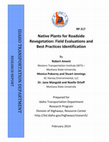
Establishing native vegetation communities on roadsides can be a proactive approach to sustainabl... more Establishing native vegetation communities on roadsides can be a proactive approach to sustainable roadways. Revegetation with native species is the preferred management practice on Idaho roadways. The environmental and economic benefits of increasing desirable vegetation along Idaho roadways include: improving slope stabilization, soil conservation, roadway safety while reducing erosion, roadside maintenance costs and noxious weeds in right-of-ways. Selecting appropriate plant species for revegetation is the foundation for successful roadside revegetation. This report provides practical information for improving roadway revegetation in Idaho. The overall objective was to monitor vegetation and soil attributes to determine effective means for establishing perennial native vegetation, reducing surface erosion, and preventing weed encroachment. The results provide guidance and recommendations on species selection, seeding methods and site preparation techniques. Bluebunch wheatgrass and Idaho fescue were the best performing grasses. Grass species that consistently establish where seeded but have a low canopy cover include sheep fescue, western wheatgrass, and basin wildrye. Forbs and shrub species had low establishment success rates and low percent canopy cover on roadside revegetation projects. If forbs are desired, it is recommended to use species that are known to establish well, relatively inexpensive, and tolerant of the herbicides being applied to control weeds.
You are free to copy, distribute, display, and perform the work; make derivative works; make comm... more You are free to copy, distribute, display, and perform the work; make derivative works; make commercial use of the work under the condition that you give the original author and sponsor credit. For any reuse or distribution, you must make clear to others the license terms of this work. Any of these conditions can be waived if you get permission from the sponsor. Your fair use and other rights are in no way affected by the above.
Erosion of steep highway cut slopes in Montana is the consequence of poor vegetation development ... more Erosion of steep highway cut slopes in Montana is the consequence of poor vegetation development in nutrient-poor growth media resulting from highway construction where topsoil cannot physically be replaced due to slope steepness. A literature review was conducted to synthesize available examples of compost application and incorporation on steep cut slopes to stimulate vegetation growth and retard erosion. Equipment applicable to either compost application or incorporation on slopes steeper than 3(H):1(V) was identified. Candidate research test plot locations were evaluated and are described.

Journal of the American Society of Mining and Reclamation, 2003
Many land reclamation technologies have been used on mining-impacted lands within the Clark Fork ... more Many land reclamation technologies have been used on mining-impacted lands within the Clark Fork River Basin Superfund sites over the past 20 years. Several sites are examples of in-situ reclamation or phytostabilization. Since phytostabilization does not remove metal contaminants, the permanence of this technology as a remedial alternative has received significant scrutiny. Many of these projects have had limited long term monitoring, and as such, the permanence of these efforts is undocumented. However, the continued existence of these sites provides a unique opportunity to evaluate the permanence of in-situ treatment strategies. The purpose of this investigation was to generate sufficient data and information from areas receiving phytostabilization treatments, varying in age from 6 to 19 years, so that the permanence and self-sufficiency of the established and reconstructed ecosystem(s) can be assessed. Six different field sites were selected that represent phytostabilization implementation in different landscape positions, using slightly different equipment, and at different times. The sites are similar in that each was degraded because of impacts from the metal mine/mill/smelter processes. Soils or tailings at the sites contain acid producing materials and are elevated in metal concentrations compared to adjacent, non-impacted landscapes. At each site, neutralizing amendments were added to raise the soil or waste pH to a target level of seven, and at some sites, other amendments were also added. Vegetation response variables observed or measured at the six sites included cover, species richness, evidence of reproduction, evidence of nutrient cycling, evidence of succession, and biomass. Soil response variables measured included pH, acid buffering capacity, and metal concentrations. This paper will present these data and discuss the efficacy of phytostabilization in terms of the sites' ability to sustain current land use and their ability to support other possible land uses. The permanence of the amendments to perform their function of attenuating acid production and immobilization of metals will also be addressed.

The Anaconda Regional Water, Waste, and Soils Operable Unit (ARWW&S OU) covers about 300 squa... more The Anaconda Regional Water, Waste, and Soils Operable Unit (ARWW&S OU) covers about 300 square miles in the southern Deer Lodge Valley and the surrounding foothills in southwestern Montana, and is part of the Clark Fork River watershed. This OU is included in the Anaconda Smelter Superfund Site and contains large volumes of wastes, debris, and contaminated soils from the processing of ores to recover metals, chiefly copper. These milling, smelting, and refining activities continued for a period of 96 years, from 1884 until 1980. In 1998, The U.S. Environmental Protection Agency and the Montana Department of Environmental Quality identified land reclamation as the general remedial action for major portions of the Operable Unit (OU). Recognizing that the intensity of land reclamation is a technology continuum and parallels the continuum of ecological function within the OU, a distinct scientific approach was required to evaluate field conditions and then select the appropriate level of reclamation intensity. The Land Reclamation Evaluation System (LRES) was developed to fill this need. This decision-making tool contains several components: 1) a description of potential human and ecological risk, followed by an assessment of the nine National Contingency Plan criteria; 2) a quantitative scoring system for the existing vegetation communities and the potential for COC transport; 3) an identification of modifying factors that may play significant roles in determining the level and extent of land remediation; and 4) decision diagrams to help guide the decision makers in identifying remedial actions and levels of reclamation intensity. The LRES has been applied to significant areas within the OU and preliminary remedial units have been delineated and assigned remedial actions. Additional data and LRES quantitative scores for extensive acreage were generated in 1999 to support remedial designs. This poster describes the LRES, remedial action triggers, selection of land reclamation remedial actions and their definitions, and post-reclamation criteria for growth media and vegetation

Journal of the American Society of Mining and Reclamation, Jun 30, 2009
The Abandoned Mine Lands Inventory System (AMLIS) includes nearly 1100 abandoned mines in Montana... more The Abandoned Mine Lands Inventory System (AMLIS) includes nearly 1100 abandoned mines in Montana. The Montana offices of the Bureau of Land Management and the U.S. Forest Service as well as the Montana Department of Environmental Quality AML Program have been working to clean up these abandoned mine lands since 1995. The agencies in general have given priority to sites with mill tailings and waste rock dumps situated in stream channels, and in Montana the clean up of impacted lands on a watershed basis through interagency cooperation has been emphasized. There is an emerging desire of the federal agencies to begin monitoring these reclaimed sites in a systematic way. The overall objective for developing the "Qualitative Reclamation Assessment Handbook for Abandoned Hardrock Mine Lands" is to provide a common platform to evaluate reclaimed mine sites so that federal agencies responsible for risk management and land management can easily communicate and work in partnership to accomplish their respective missions. The handbook contains assessment forms and protocol designed to evaluate pertinent attributes found at specific locations within a reclaimed mine site (repository, wetland, etc.). These attributes may include vegetation cover, status of a cap or liner, roads, evidence of AMD, and several others. The outcome envisioned by the agencies includes identifying maintenance needs, generating temporal information for trend analysis, and identifying remedial methods and technologies that have proven to be effective and those that have resulted in poor performance. The data and information collected during a reclamation assessment can then be used to evaluate the status of the reclamation work and whether or not the conditions at the site remain protective of human health and the environment.

Mine wastes exhibiting elevated heavy metal concentrations are widespread causes of resource degr... more Mine wastes exhibiting elevated heavy metal concentrations are widespread causes of resource degradation in the western US and elsewhere. This problem is further exacerbated by the presence of pyrite that oxidizes upon exposure to the atmosphere resulting in acid generation. Since pyrite was not recovered as a mineral of economic value during mining, it was disposed of in waste piles and tailing ponds that are now a source of acid generation and release of metals to the environment. Tailing cleaning, or sulfide mineral recovery through reprocessing, was evaluated as an innovative reclamation technology. Tailing materials, from both operational and abandoned mines, were collected to evaluate the feasibility of sulfide mineral recovery. Successful mineral separation was performed resulting in a low volume metal sulfide concentrate and a high volume cleaned silicate media. Total metal concentrations were decreased in the cleaned tailing material and elevated in the sulfide concentrate compared with the original tailing chemistry. In greenhouse trials, vegetation establishment in cleaned tailing material was compared with plant growth in topsoil and lime-amended tailings. While vegetation performance was best in the topsoil control, both lime-amended and cleaned tailings displayed adequate plant growth.
Journal American Society of Mining and Reclamation, 2009
Releases of mine waste, contaminated water and sediments with elevated levels of metals have impa... more Releases of mine waste, contaminated water and sediments with elevated levels of metals have impaired productivity of agricultural land adjacent to the Arkansas River and downgradient from the historic mine districts of Leadville, Colorado. Historically irrigated agricultural meadows outside the floodplain contaminated by low pH, metal enriched irrigation water were sampled. The resultant depositional pattern shows the influence of irrigation ditches in conveying contaminated materials as expressed by bare ground and sparse vegetation cover dominated by metal tolerant species. The co-occurence of phytotoxicity with acidic soil was described during pre-treatment sampling.
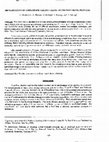
Journal American Society of Mining and Reclamation, 1995
This study was an assessment of in-place chemical immobilization of metal contaminants in mine wa... more This study was an assessment of in-place chemical immobilization of metal contaminants in mine wastes followed by revegetation as a potential remedial alternative for clean-up of a Superfund site. This six year treatability study evaluated the use of different amendments, various incorporation techniques, and selected plant species in both laboratory/greenhouse tests and at five waste/contaminated soil locations along Silver Bow Creek between Butte an.d Opportunity, Montana. Amendments (mainly calcium hydroxide and calcium carbonate) found in the laboratory to be most effective in controlling pH and metal solubility of these acid producing metalliferous wastes were mixed with the wastes/soils in replicated greenhouse trials. Amendments and selected plant species were combined into replicated field trials using different incorporation techniques. Vegetation response, components of the soil chemistry, and soil hydrology were measured and differences among treatments were assessed. Data support coversoil as the most effective treatment, but coversoils are not available in quantities adequate for the rehabilitation of all the disturbances along silver bow Creek. Pressure injection of lime slurry into the wastes did not provide an adequate rootzone for long-term plant growth. Agricultural tilling of amendments provided only 15 cm of adequate rootzone materials. A plow capable of mixing waste to a depth of 122 cm provided an ameliorated rootzone that varied from 30 to 60 cm deep. Plant cover and production were greater on deep-plowed plots than on plots prepared by the two other incorporation techniques. Deeper root penetration was also found in the deep-plowed plots than in plots treated by agricultural tillage or the injection technique. Surface runoff was markedly reduced and surface water quality improved by all treatments.

Applied Geochemistry, 2000
Sul®de mineral weathering is a major source of acid generation in mining environments. Oxidation ... more Sul®de mineral weathering is a major source of acid generation in mining environments. Oxidation and hydrolysis reactions in soil and geologic material under earth surface conditions causes weathering of reduced sul®de minerals resulting in liberation of weathering products including acid. Pyrite and marcasite are minerals common in mine environments that cause acid generation. Many other sul®de minerals are present in mining environments which may or may not form acid upon weathering. Characterization of complex mineral assemblages containing S compounds is therefore critically important to pre-mine planning and postmine waste characterization. Despite the importance of mineral weathering behavior, little is known about the acid generation characteristics of common sul®de and sulfate minerals. To assess the response of common sul®de and sulfate minerals to oxidizing conditions, 13 minerals were subjected to treatment with 10% H 2 O 2. The resulting leachate was analyzed for pH, electrical conductivity, S and titratable acidity. The sul®de minerals arsenopyrite, pyrite, chalcopyrite, pyrrhotite, marcasite and sphalerite demonstrated signi®cantly elevated levels of titratable acidity and are acid generating in contrast to galena, chalcocite and all the sulfates. The sulfate minerals barite, anhydrite, gypsum, anglesite and jarosite were included in experimentation and were found not to form acid under strongly oxidizing conditions. Remediation strategies for disturbed lands containing reduced S minerals must therefore consider not only the total quantity of sul®de minerals present, but the speci®c mineralogy of the S compounds.
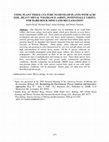
Journal of the American Society of Mining and Reclamation, 2009
Our objective for this project was to determine if we could find, collect, and tissue culture loc... more Our objective for this project was to determine if we could find, collect, and tissue culture local native plants which grow directly on acid, heavy metal contaminated (AHM) soil. These plants are potentially useful for mine land reclamation and may possess acid soil, heavy metal tolerance. Explants (small actively growing plant tissue segments) were collected from fifteen plant species growing directly on degraded sites heavily impacted from past hard rock mining activities in Western Montana. These plants, when collected were rooted, surviving and growing in soils characterized by very low soil pH (about 4.0) and high concentrations of various heavy metals. Of the 15 species collected, six were successfully propagated using plant tissue culture, also known as micro- propagation. We concentrated on three of the six species and have attained commercial rates of multiplication and rooting in-vitro. These three species have been successfully acclimated and grown under commercial green...
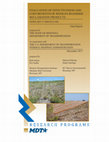
Wool has been used by humans for millennia for clothing, blankets, and even for housing like the ... more Wool has been used by humans for millennia for clothing, blankets, and even for housing like the yurts of central Asia. This project took a fresh look at wool and explored its potential for incorporation in erosion control blankets (ECBs) and to increase the establishment of vegetation along Montana roadsides after highway construction or other right-of-way disturbance. The project was sponsored by the Montana Department of Transportation (MDT) and the Center for Environmentally Sustainable Transportation in Cold Climates. A research team from the Western Transportation Institute (WTI) and its partner KC Harvey Environmental, LLC, explored the use of woolen products for roadside reclamation. The project targets the use of low quality wool that is substandard or unmarketable, thus offering both environmental and economic benefits. Wool has many beneficial attributes (after scouring) including 15-17% nitrogen content, absence of weeds, hypoallergenic, nearly fire proof, and the capabl...
Proceedings of the 18th LACCEI International Multi-Conference for Engineering, Education, and Technology: Engineering, Integration, And Alliances for A Sustainable Development” “Hemispheric Cooperation for Competitiveness and Prosperity on A Knowledge-Based Economy”, 2020

Establishing native vegetation communities on roadsides can be a proactive approach to sustainabl... more Establishing native vegetation communities on roadsides can be a proactive approach to sustainable roadways. Revegetation with native species is the preferred management practice on Idaho roadways. The environmental and economic benefits of increasing desirable vegetation along Idaho roadways include: improving slope stabilization, soil conservation, roadway safety while reducing erosion, roadside maintenance costs and noxious weeds in right-of-ways. Selecting appropriate plant species for revegetation is the foundation for successful roadside revegetation. This report provides practical information for improving roadway revegetation in Idaho. The overall objective was to monitor vegetation and soil attributes to determine effective means for establishing perennial native vegetation, reducing surface erosion, and preventing weed encroachment. The results provide guidance and recommendations on species selection, seeding methods and site preparation techniques. Bluebunch wheatgrass a...







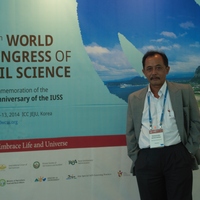



Uploads
Papers by Stuart Jennings